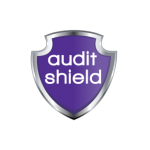Passwords are always on our mind, and we’ve discussed before how important it is to manage and secure them, and keep them up-to-date.
Keeping your valuable information safe – banking information, correspondence with family, friends and associates, accounts for purchasing any number of products and services – is something we think about and encounter just about every day, isn’t it? Not only maintaining robust passwords but also regularly changing them is a good practice. Many online systems and portals now also require two-factor authentication, demanding a second verification method in addition to passwords, usually where a verification code is sent to a separate address or device. So … it all gets rather intimidating and bewildering at times, doesn’t it?

Nevcon Accounting continues to turn to 1Password for all its password management needs. It’s a solid application, and we especially like how it’s organized, and how it gives us regular alerts to keep things up-to-date. But don’t just take our word for it. Here is a good review from PC Mag.
You can learn more about 1Password here: https://1password.com/
![]()
P.S. That 1Password was founded in Canada in 2005 is some wonderful icing on the cake, too!


